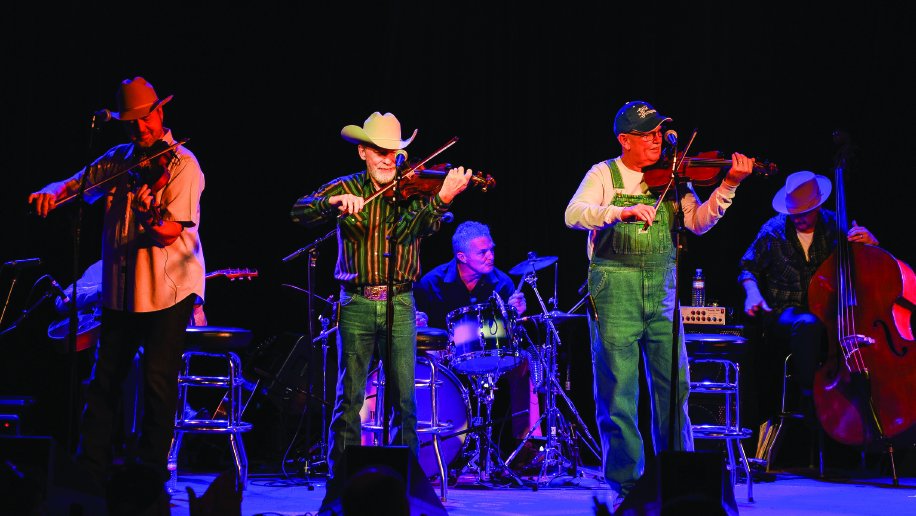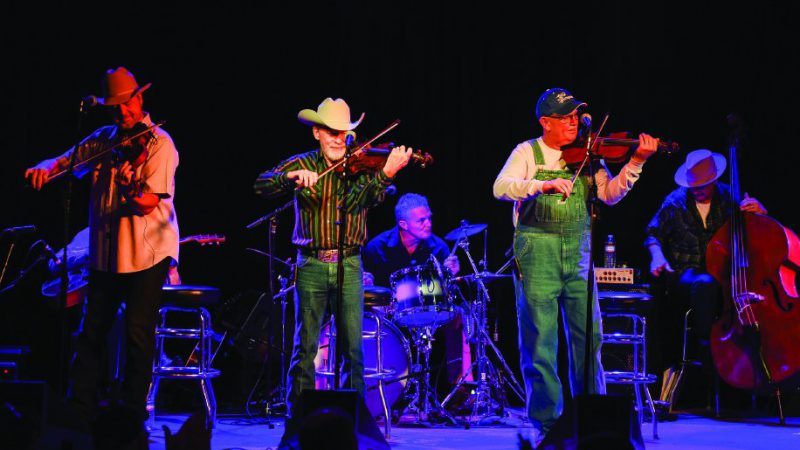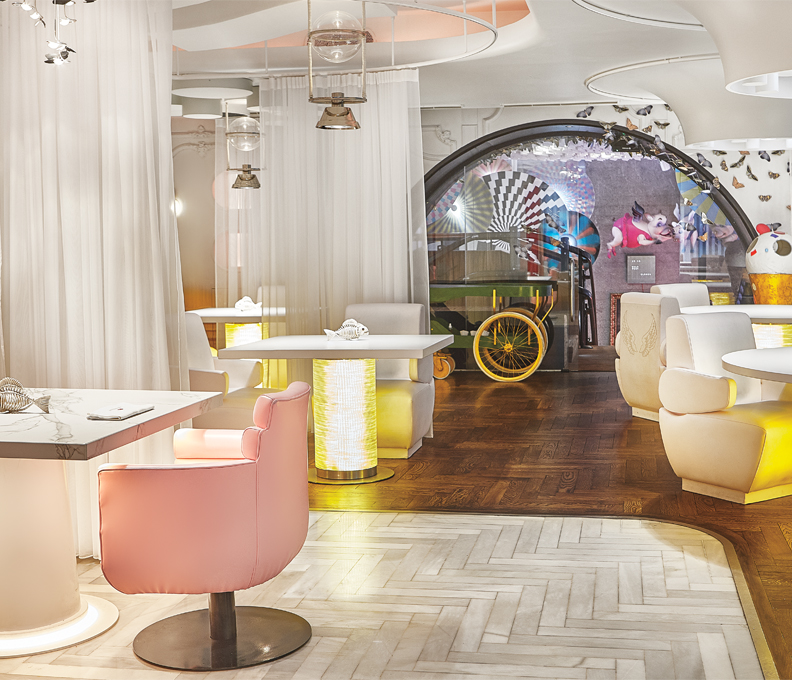Sound of Success
Famous for music, Nashville is also a hit when it comes to tourism, tech and tantalizing tastebuds
April 29, 2019

You can’t talk about cosmopolitan Nashville – the center of Southern haute cuisine and the engine room of Tennessee’s healthcare and high-tech businesses – without considering country music.
As much as the movers and shakers of modern Nashville try to tell you that this attractive, diverse city is so much more than the musical genre for which it is internationally famous, the roots of country run so deep that they are both the foundation and the living exemplar of everything that is good about this vibrant and hospitable city. How the city’s money-making music machine arrived at this place was explained to me one morning at the Country Music Hall of Fame by Michael McCall, writer and editor for the Country Music Foundation.
The museum, an essential port of call for any first-time visitor, traces country music chronologically, so you start with the growth of the radio stations in the 1920s and move on to the rise of mass-produced automobile, which allowed artists to tour the South with live shows.
Then to the movie-star singing cowboys of the 1940s and on and on through the ’50s with the Louvin Brothers and Hank Williams, the ’60s with George Jones, Merle Haggard, Dolly Parton, then to the big stadium country rockers of the nineties, and on through to phenom Taylor Swift and the country-pop modernists of today.
The difference between the early days and now, according to McCall, is that it is no longer a down-home, folksy Southern cottage industry. Today this is big business.
“Back then, people like George [Jones] and Tammy [Wynette] toured in buses with their names painted on the side,” he said. “They came from poor stock and were very grounded. Now, country stars grow up in the suburbs with cable TV and travel to concerts in their own private jets.”
It was McCall’s tour through the wonderful displays in the Hall of Fame that gave me my first basic lesson on the rise and rise of Nashville. Those impecunious country folk of the ’50s and ’60s suddenly found untold wealth and went out and spent like crazy before they developed anything like good taste.
Thus, the array of rhinestone-covered Nudie suits and luminous spangly dresses, and if you were looking for the best/worst examples of crazy Southern consumerism then look no further than two convertibles sitting nose-to-tail on the second floor – Elvis’s garish Cadillac featuring crushed diamonds in the paintwork, and Webb Pierce’s Bonneville complete with pistols for door handles and gigantic bull horns adorning the front bumper. These days, we associate that kind of bling with hip-hop stars.
Boom Town
Nashville is set in a low-lying basin beside the Cumberland River. The city center is a collection of skyscrapers gathered around the AT&T Building, aka the Batman Building, so-called for reasons that are obvious as soon as you see it. Spreading out from there are low-rise suburbs of which some, like Music Row – where many of Nashville’s prolific songwriters ply their craft – are tree-shaded and lined with turn-of-the-20th-century houses. A short drive beyond are the bucolic rolling Tennessee hills.
Nashville has come a long way since country music catapulted it on to the world stage. Today, its image is that of a Southern renaissance city, with healthcare by far the number one revenue producer – more than 500 companies with combined global revenue of more than $40 billion annually. Local tourism, which includes a steady growth in the lucrative business and convention sectors, brings in 14.5 million visitors a year, earning the city $6.5 billion annually, while the music industry earns just under $6 billion.Tied to all of these industries is technology, with tech-based start-ups a major growth area – the city is ranked 13th out of 25 rising US tech hubs, according to the US Chamber of Commerce. Nashville has the fourth-strongest economy in the US and the lowest rate of unemployment. Basically, it’s a boom town.
The boom has seen a wave of migrants from more crowded, less user-friendly US cities, running at more than 100 arrivals a day for many years. Only this year has that number plateaued at just under two million – which is double the population in 1990. And its reputation for being friendly, manageable, well run and well groomed – it consistently tops “favorite city” polls – has also led to an influx of big stars buying homes here, including Nicole Kidman, Ed Sheeran and Johnny Depp.
Southern Hospitality
With the boom has come a transformation into a modern metropolis that is a foodie capital and with rooms to spare. Over the past five years, more than 5,000 new hotel rooms have opened in the city center and, according to Butch Spyridon, president and chief executive of the Nashville Convention and Visitors Corporation, another 5,000 are under construction, representing the largest growth anywhere in the urban US.
Hotels available to the visiting business traveler range from trendy boutiques (Thomson Nashville in the Gulch area, the new Fairlane hotel, the high-fashion 21c Museum hotel, and the retro-cool Noelle) to large, classic city hotels (the 533-room JW Marriott Nashville, which opened in July last year, and the 376-room Westin) and historic properties (the Hermitage, which opened in 1910). A 334-room W hotel is due to open in 2020, also in the Gulch, a former industrial area that is now one of the cool epicenters of the city.
Because the city is small and largely walkable, all of these properties are within easy reach of its business hubs, the Convention Center and most musical venues. The Ryman, the Station Inn and the Printers Alley clubs are walking distance, while 3rd and Lindsley and the Bluebird Café are short Uber rides away. In this little big town, everything is easily accessible.
Culinary Rebirth
A significant change in the city’s culinary landscape has accompanied the boom, with trendy international restaurants and cutting-edge cocktail bars opening every week. Over the past decade, the city has drawn in chefs from all over the country, opening new restaurants such as Husk Nashville, Henrietta Red, Café Roze, Etch and Bastion are as good as you’ll find in LA or New York.
That said, however much you are encouraged to embrace modern Nashville, you may also wish to tip your hat at the Old South and dine either at Hattie B’s Hot Chicken or Arnold’s Country Kitchen. At Hattie B’s I took the plunge and ordered one of the famously scorching “Shut the Cluck Up” mega-hot chicken dishes. It was served as advertised, leaving my eyes watering for the rest of the day.
At Arnold’s, you sit at a long formica table alongside truckers, construction workers, lawyers, city gents and country music stars. It is an institution – all red leather banquettes, concrete floor, and walls crammed with pictures of some music greats who have been customers. This is authentic Nashville and however international the city becomes, you get the sense that places like these will always have an audience.
In fact, appreciation of authenticity is not only a Nashville staple but also a successful commercial platform. Take the Tennessee whiskey trade, one of the state’s top ten export businesses amounting to $1 billion a year.
While Jack Daniel’s and George Dickel, both a short drive from downtown in Lynchburg and Cascade Hollow, are the major producers, there are a number of smaller local distilleries that now form part of the 25-stop Tennessee Whiskey Trail.
MUSIC MUSTS
Live music, mainly country-oriented but not exclusively, plays 24/7 in Nashville. The Lower Broadway honky tonks are in the center of the touristy downtown area and are an essential stop. This is where the music hopefuls play for tips; the standards are largely outstanding.
Nearby is the mother church of country, Ryman Auditorium, home of the Grand Ole Opry till 1974. It still hosts Opry events several times a week as well as everyone from the blues group Tedeschi Trucks Band to English rocker Noel Gallagher’s High Flying Birds. A little farther out is the legendary Bluebird Café, where songwriters play in the round.
If you’re here on a Monday night, visit 3rd and Lindsley, where the Time Jumpers play. A collective of Nashville’s top veteran session players, they have included country star Vince Gill and the brilliant steel guitar virtuoso Paul Franklin. This is pure Western swing, or cowboy jazz as the band members describe it; genteel, lilting, melodic.
Then there are the excellent museums. As well as the Country Music Hall of Fame, there are the Johnny Cash and Patsy Cline museums side-by-side, and RCA Studio B, where Elvis, the Everly Brothers and Roy Orbison recorded.
Don’t miss the city’s two great music shops, Grimey’s and Third Man Records. The latter, owned by Detroit migrant and music superstar Jack White, is now much more than a record store, it’s morphed into a sprawling creative Aladdin’s Cave that features, among other things, the world’s only live music venue with direct-to-acetate recording capabilities.




